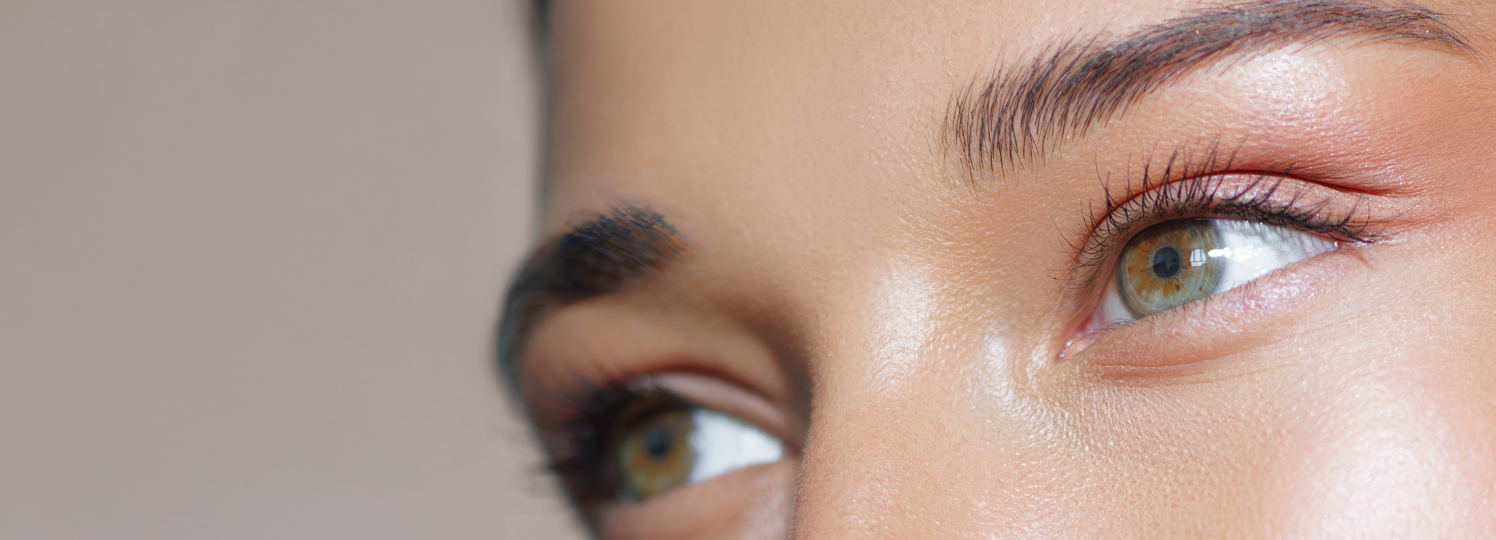

Eye Care



Eye Care
A real advantage not only for the particularly delicate eye area prone to wrinkle, but also for all skin types. The skin around the eyes is protected by vitamin E and replenished by allantoin and vitamin A. Lecithin, hyaluronic acid and urea provide optimal moisture and give this delicate region a firmer appearance, so that the expressive eye area can really come into its own. It is particularly beneficial and effective in combination with the Eye Gel.
15 ml Jar
Art.-Nr. 9009
7 ml Tube
Art.-Nr. 9421
Aqua, Caprylic/Capric Triglyceride, Glycerin, Alcohol, Urea, Glyceryl Stearate, Hydrogenated Phosphatidylcholine, Vegetable Oil, D-alpha Tocopheryl Acetate, Stearyl Alcohol, D-mixed-Tocopherols, Retinyl Palmitate, Lactic Acid, Sodium Hyaluronate, Allantoin, Citric Acid, Sodium Hydroxide
Aqua:
Water. It accounts for around 65% of the weight of the human body and is therefore of fundamental importance for bodily functions, including those of the skin. In many cosmetic products (aqueous solutions, cleansers, emulsions), water is the ingredient with the largest proportion of the formulation in terms of quantity and forms the basis of the aqueous phase in emulsions. Water is a good solvent for polar (hydrophilic) substances such as alcohols, water-soluble vitamins or salts. For use in cosmetic products, the water used is generally pre-treated to remove microorganisms that could lead to spoilage of the product or dissolved salts that may impair the stability of emulsions or gels (sterilization and desalination).
Caprylic/Capric Triglyceride:
Vegetable neutral oil (triglyceride) with short-chain fatty acids. Has moisturizing properties.
Alcohol:
Ethyl alcohol: Body identical. Has a refreshing and antibacterial effect. Also serves as a solvent for other ingredients. Contrary to claims to the contrary, there is no risk of a drying effect on the skin at normal application concentrations!
Urea:
The water-soluble urea is used in numerous cosmetic products. Urea is a component of the natural moisturising factors of the horny layer (content between 7 % and 12 %; up to half lower in chronically dry skin) and has a high water-binding capacity. It contributes to sustained moisturisation of the skin and reduces transepidermal water loss. Urea has a keratoplastic effect, in higher concentrations it has a keratolytic effect and is therefore also used in the care of skin affected by psoriasis or atopic dermatitis (neurodermatitis). Urea is also able to reduce the irritating potential of surfactants.
Glyceryl Stearate:
Is a component of sebum, partially saponified fat, skin-protecting and moisturizing properties, consistency regulator and auxiliary emulsifier for lotions and creams.
Hydrogenated Phosphatidylcholine:
A phospholipid produced by the body.
Vegetable Oil:
Skin-identical base oil made from vegetable raw materials, also labelled as Olus Oil.
D-alpha Tocopheryl Acetate:
Natural vitamin E acetate; storage form in the skin, is converted into the active form by dissolving the acetate bond; antioxidant with skin-protecting properties, e.g. against UV radiation, retains moisture, delays premature skin ageing
Stearyl Alcohol:
A body-identical fatty alcohol, occurs as an intermediate product in fat metabolism, also present in small quantities in the epidermis. Provides consistency in emulsions.
D-mixed-Tocopherols:
Is the name of a mixture of natural tocopherols (vitamin E; D-alpha-, beta-, gamma- and delta-tocopherol). Vitamin E is the most important skin protection vitamin, which protects the skin from UV rays and oxygen radicals.
Retinyl Palmitate:
Is the storage form of vitamin A, which is converted into free vitamin A in the skin. It stimulates cell division and therefore has a strong regenerative effect, particularly on pre-aged skin and with prolonged use. Studies have even shown an increase in the collagen content of the skin, a slight reduction in wrinkles and an increase in skin elasticity.
Lactic Acid:
Lactic acid. Occurs as a metabolic product in the body and on the skin, has a peeling effect on the horny layer in higher concentrations and at a low pH value of 2 to 3, supports the moisture content in buffered form (physiological pH value of the skin approx. 5.5) and preserves the skin's protective acid mantle.
Sodium Hyaluronate:
Sodium salt of hyaluronic acid. Natural moisturiser with skin-smoothing properties, important natural component of the lower skin layers (dermis). Formerly produced from rooster combs, now produced in better quality by biotechnology.
Allantoin:
Allantoin is a body-identical, water-soluble substance and is chemically related to urea. It is found in various plants but is now produced synthetically for use in cosmetics. Its most important property is the stimulation of new cell formation. It promotes collagen formation, skin regeneration and wound healing, stimulates desquamation, smoothes the skin and can have a soothing effect on atopic dermatitis.
Citric Acid:
Citric acid. Biotechnologically produced body-identical active ingredient. Occurs in the metabolism of the human organism and can also be found in low concentrations on the skin. It protects the skin from oxidative stress, supports the product protection of the antioxidants and regulates the pH value of the product.
Sodium Hydroxide:
Sodium hydroxide. Used to adjust the pH value of cosmetic products. Sodium and hydroxide ions are identical to the body.